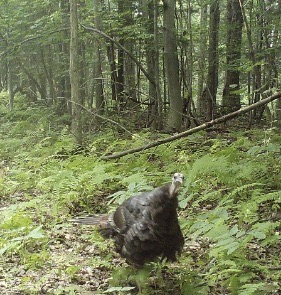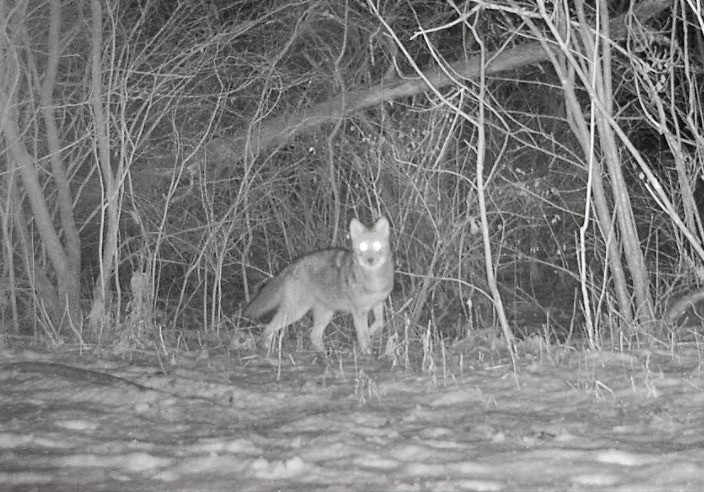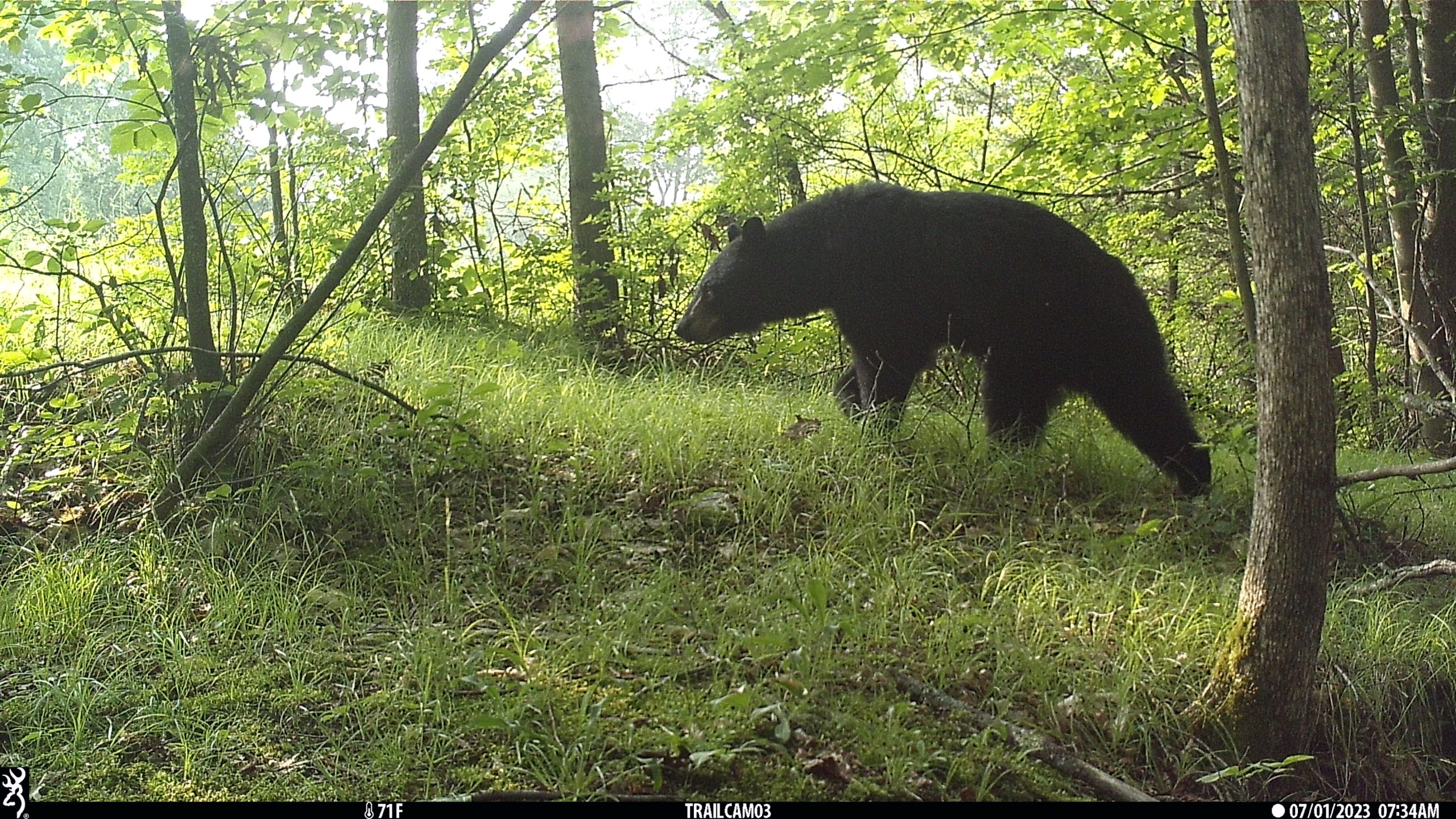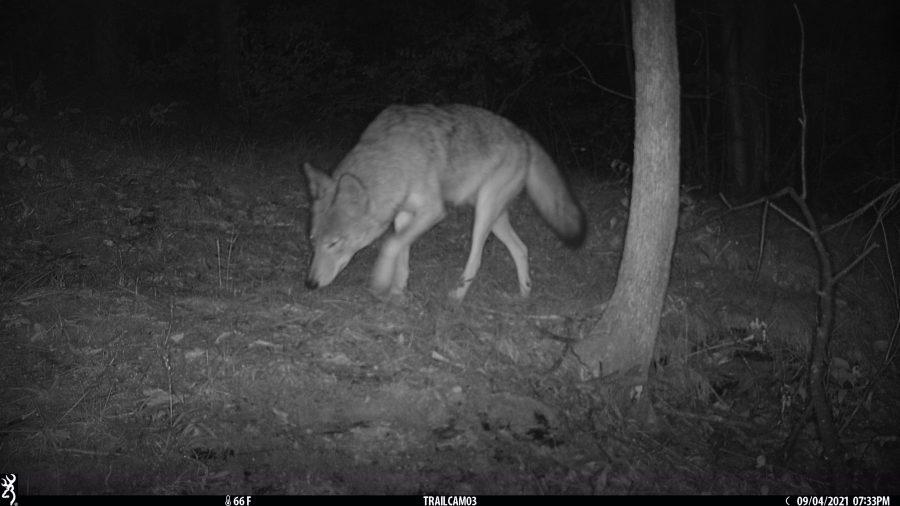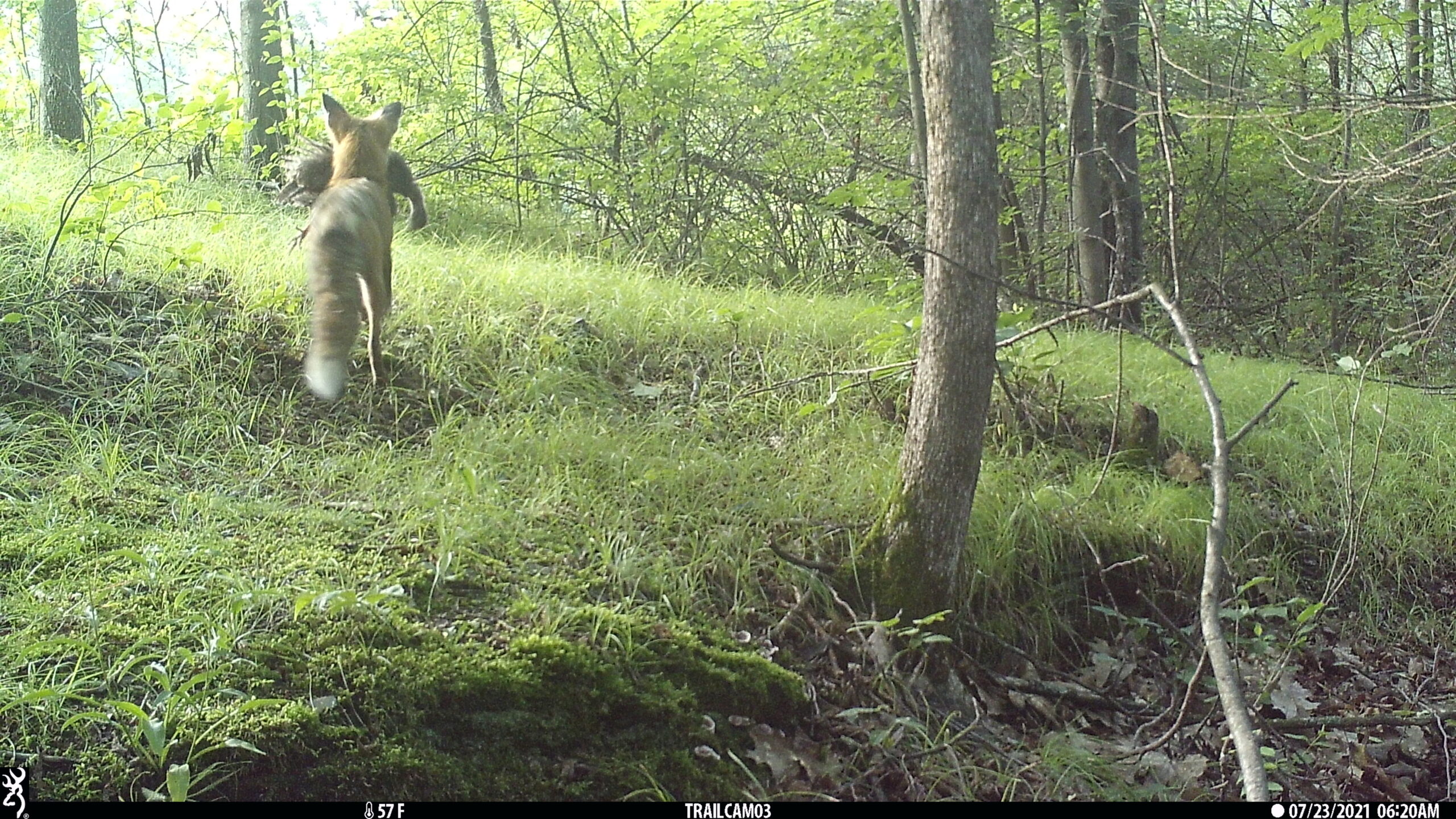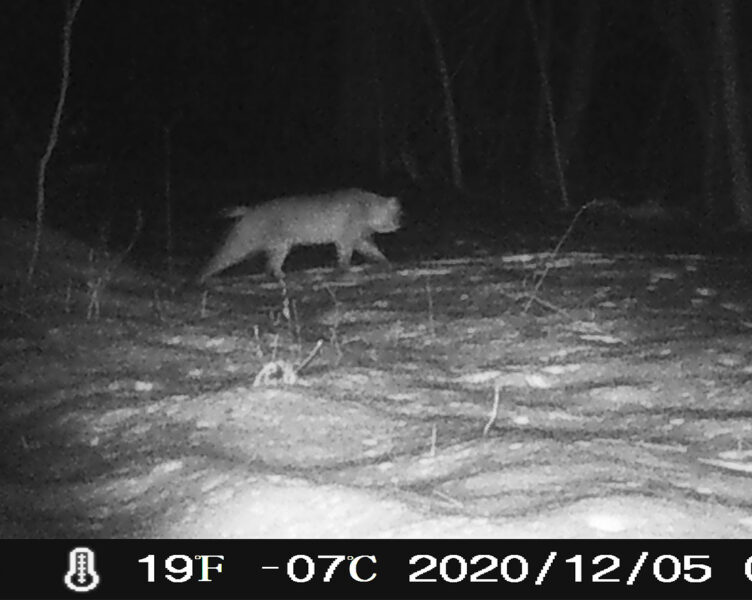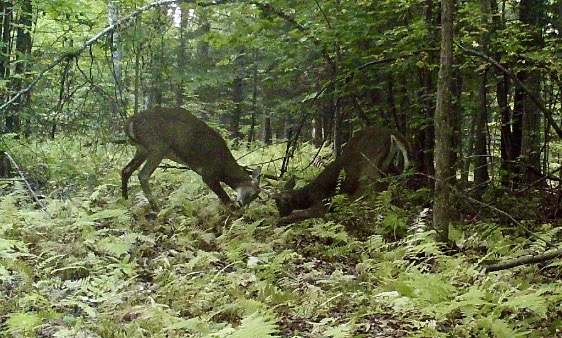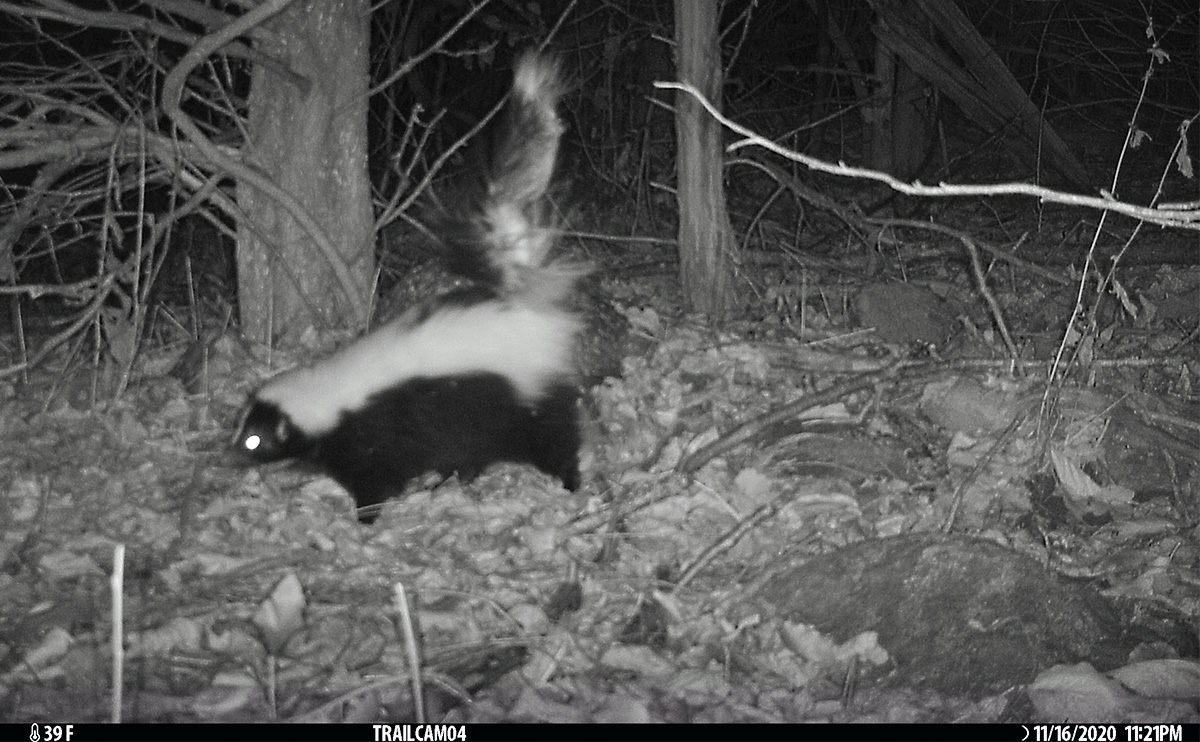Where the Wild Things Are: Documenting Cornwall’s Habitat Connectivity Blocks (2023-2025)
The Conservation Commission’s inventory of the town’s connected landscape linkages is well underway! Our goal is to identify and map where the town’s forests, shrub-lands, wetlands, stream and river beds provide contiguous, protective cover for the town’s wide-ranging wildlife species (think: bobcat) as they move long distances in search of food and safe shelter.
Get Involved!

Cameras in action!
Wildlife pictures can tell us a lot about the animals who use these sites. Here are some of our favorite photos from 2020-2023.
Mystery photo! What animal is this?
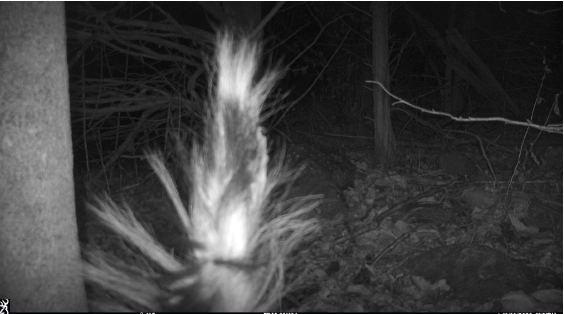
Getting your own camera
If you have never used a trail camera, the Conservation Commission can share tips on finding a good one online and guide you through the first steps in learning how to use it.
Camera Trapping Guide by Janet Pesaturo is an excellent resource for photography techniques as well as photos and information on each animal’s physical characteristics, tracks, diet, scat, habitat, breeding, as well as specific camera-setting tips.
For one-hour talk about trail cameras, in which Pesaturo discusses how trail cameras work and how to set them up, go here.
For further information about this project or to participate in it, contact Conservation Commission member Mary Dodge.

